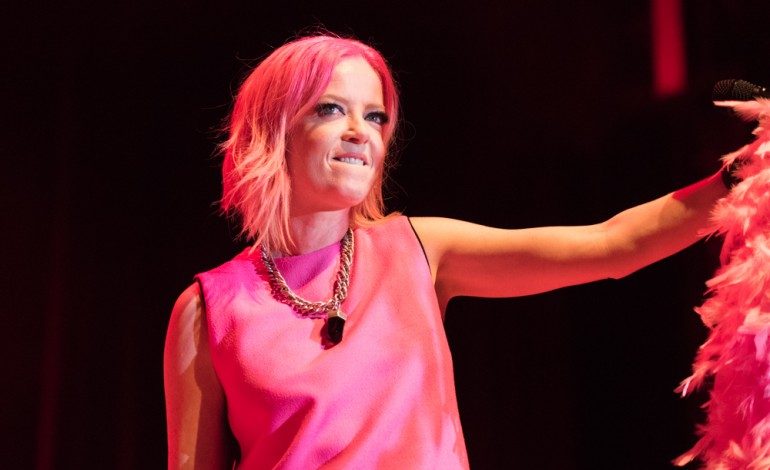

It takes a lot of courage to speak out about personal demons, unsure of how the public will respond. In recent months, there have been hordes of celebrities making their voices heard on personal issues. With each piece, fans become closer, relating even more to the stars they look up to. In an op-ed piece for the New York Times, Garbage’s frontwoman Shirley Manson made the courageous move and spoke out about her experience with self-harm entitled “The First Time I Cut Myself.”
In the article, Manson talks about how, as a teenager, she began cutting herself with a knife while suffering from depression and dealing with a toxic romantic relationship. She opens up her piece by explaining that her descent into cutting began when she was a teenager.
“I didn’t know I was a cutter until the first time I chose to cut. I didn’t even know it was a “thing.” I had never heard the phrase “self-harm” back then, in the mid-80s in Scotland. There were no support groups for people like me or any progressive, sympathetic op-ed pieces about the practice of cutting in my local newspaper. It was something I came to naturally, privately, covertly. I didn’t tell a soul about it. It was a secret. A secret that was mine to keep.”
She details a relationship with a man who “was tall and handsome and harbored some serious, unresolved anger issues toward women. I should have run for the hills, but I didn’t.” Even though he slept around, she stayed with him refusing to talk to anyone about it.
In a descriptive and personal narrative, Manson describes when she first cut herself, on the edge of her flatmate’s bed with a silver penknife, and, according to her, “it didn’t hurt.” She goes on by saying, ” In that room at that moment, I felt untouchable and powerful. I was a woman in charge,”
When she put the unhealthy relationship behind her, she explains that that was the time she stopped cutting herself. Though, like most demons, the impulse to cut returned years later. It was during the time while her band, Garbage, was on tour to celebrate their album Version 2.0 that she slipped back into that mindset. Manson explains that the pull this time was “as compelling as it has ever been.”
She explains: “I was under immense physical and mental pressure. I was a media “it” girl, and as a result, I was lucky enough to be invited to grace the covers of newspapers and fashion magazines all over the world. Perversely, the downside of attracting so much attention was that I began to develop a self-consciousness about myself, the intensity of which I hadn’t experienced since I was a young woman in the throes of puberty.”
Manson ends her piece by being the strong, independent and powerful women that she is. “Today I try to remain vigilant against these old thought patterns. I vow to hold my ground. I choose to speak up. I attempt to be kind, not only to myself but also to other people. I surround myself with those who treat me well. I strive to be creative and determine to do things that make me happy,” she wrote. “I believe it is not what we look like that is important, but who we are. It is how we choose to move through this bewildering world of ours that truly matters.”
Read the entire New York Times piece here.
Photo credit: Sharon Alagana
